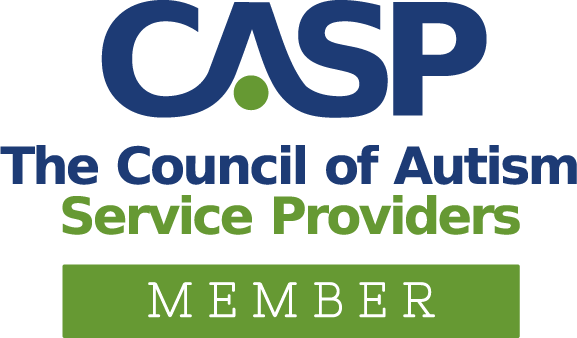High-functioning autism, sometimes called HFA, is not a diagnosis or official medical term. You will not find high-functioning autism in the DSM-5, the official diagnostic manual that defines Autism Spectrum Disorder. However, high-functioning autism is a common term used to refer to individuals on the spectrum who read, speak, write and manage daily living skills without much intervention. High-functioning autism refers to individuals with minimal support needs.
Autism Spectrum Disorder is a neurodevelopmental disorder defined by challenges in communication and social interaction. Autism Spectrum Disorder is unique for every person it touches, and no two cases look the same. This spectrum means the need for support and intervention will vary among individuals diagnosed since every experience will be unique. Some individuals will need substantial help every day, while others will go on to live independently with little intervention. This spectrum of symptoms is why autism is now referred to as a spectrum disorder encompassing former diagnoses like Asperger’s Syndrome and labels like high-functioning autism.
For many years, only individuals with severe symptoms of autism were diagnosed as having what was then called Autistic Disorder. The fact that several previously used diagnostic terms are now considered Autism Spectrum Disorder may be part of why there seem to be so many new autism cases each year. But starting around the 1990s, more mild forms of autism began to be recognized, including high-functioning autism and Asperger’s syndrome, which share characteristics.
In 2013, the American Psychiatric Association took all the autism-related disorders and grouped them into one term: Autism Spectrum Disorder. However, to this day, you hear many people use the term Asperger’s. Many people still using the word are unfamiliar with the spectrum or current diagnostic characteristics.
How Is High-functioning Autism Different from Asperger’s Syndrome?
According to the Diagnostic and Statistical Manual on Mental Disorders, otherwise known as the DSM-5, which was updated in 2013, there is no longer an exact condition known as Asperger’s Syndrome. Before the update, individuals diagnosed with Asperger’s had symptoms in common with people diagnosed with autism.
Those diagnosed with Asperger’s, however, did not experience delays in:
- Ability to use language
- Cognitive development
- Development of age-appropriate self-help and play skills
- Adaptive behavior
- General curiosity about their environment
Individuals previously diagnosed with Asperger’s had milder symptoms. Their condition’s impact on their ability to function in traditional society was slight. In the past, these individuals would have been considered high-functioning. But as previously discussed, high-functioning autism has never been an official clinical diagnosis, and the DSM-5 removed Asperger’s Syndrome from the list of neurodevelopmental disorders.
What Are the Three Levels of Autism Spectrum Disorder?
Rather than use outdated terms like high-functioning autism, professionals now diagnose those with Autism Spectrum Disorder using three levels defined by the amount of support a person will need.
Level 1 Autism Spectrum Disorder
Individuals may have some symptoms at this level, but they don’t necessarily impact performance at work, school, or in relationships. Level 1 is what most individuals are referring to when they use the term high-functioning autism or Asperger’s Syndrome.
Level 2 Autism Spectrum Disorder
Individuals at this level will require some support weekly. Examples of this include speech therapy and therapy for social skills and behavior.
Level 3 Autism Spectrum Disorder
Individuals at this level require substantial outside support on a daily basis. This may include full-time aides or behavior specialists. They will also likely have a treatment plan and team.
How Are the Autism Spectrum Disorder Levels Determined?
A trained psychologist will have the tools needed to determine a person’s Autism Spectrum Disorder level. These tools include the Autism Diagnostic Observation Schedule, Second Edition (ADOS-2). This assessment pairs with observation and understanding of the individual’s developmental history to determine the level.
Autism can be diagnosed as early as 18 months old. However, it is not uncommon to be diagnosed much later in life. However, being diagnosed later in life can make getting support more difficult. This is why it’s essential to look out for warning signs in developmental milestones. Most insurance plans cover treatments like ABA (Applied Behavior Analysis) therapy if you get a diagnosis before age eighteen.
Support for Those with Autism Spectrum Disorder
There are no standardized recommendations for different levels of Autism Spectrum Disorder. Support will depend on the person’s unique situation and perspective. Individuals with autism need the same kinds of support. Yet, those with Level 2 or Level 3 Autism Spectrum Disorder will likely need more intervention and long-term behavioral therapy than those with Level 1 Autism Spectrum Disorder. These interventions and therapies include:
Applied Behavioral Analysis (ABA) therapy
This behavior treatment is considered the gold standard in autism treatment and encourages positive behaviors while decreasing destructive behaviors. This evidence-supported science increases independence and tolerance over time. Early intervention (ages 18 months to 5 years) is of utmost importance when considering ABA therapy.
Speech therapy
Individuals with autism can have various speech challenges. Some individuals on the spectrum may be completely nonverbal. In contrast, others might have challenges engaging in basic conversations with others. Speech therapy can aid in a range of speech impediments. It can help a child to utter sounds or even learn to structure sentences and phrases.
Physical therapy
Autistic individuals may have challenges related to gross motor skills or fine motor skills. These challenges can make actions such as running, walking, and jumping an enormous undertaking. Physical therapy can strengthen and define muscles. It also improves general motor skills.
Occupational therapy
Occupational therapy can help individuals with autism learn to use their hands, legs, and other body parts effectively. This mobility can help make daily tasks possible, ultimately increasing independence in the child.
Sensory Training
Autistic people are often sensitive to lights, sounds, and touch. Sensory training can help individuals become more comfortable and confident with sensory input.
Medication
While there aren’t any medications that currently treat autism, some individuals take pharmaceuticals to manage depression or other mental health symptoms that can accompany autism.
Is It OK to Use the Term High-Functioning Autism?
High-functioning autism is not a medical term, and it doesn’t have evident characteristics. Individuals who use this term typically refer to Level 1 autism, as described above.
In the autistic community, labels like high-functioning autism or low-functioning autism are discouraged because they can be misleading. A person may be able to act independently in some areas but need significant support in others. People who are described as high-functioning can often have important needs that are overlooked.
Treating Autism at ABA Centers of America
At ABA Centers of America, we can help people of all ages diagnosed with any level of autism. Learn more about how we can help with ABA (Applied Behavior Analysis) therapy. Call us at 844-923-4222 for a free, no-obligation consultation. Or message us for more information.







